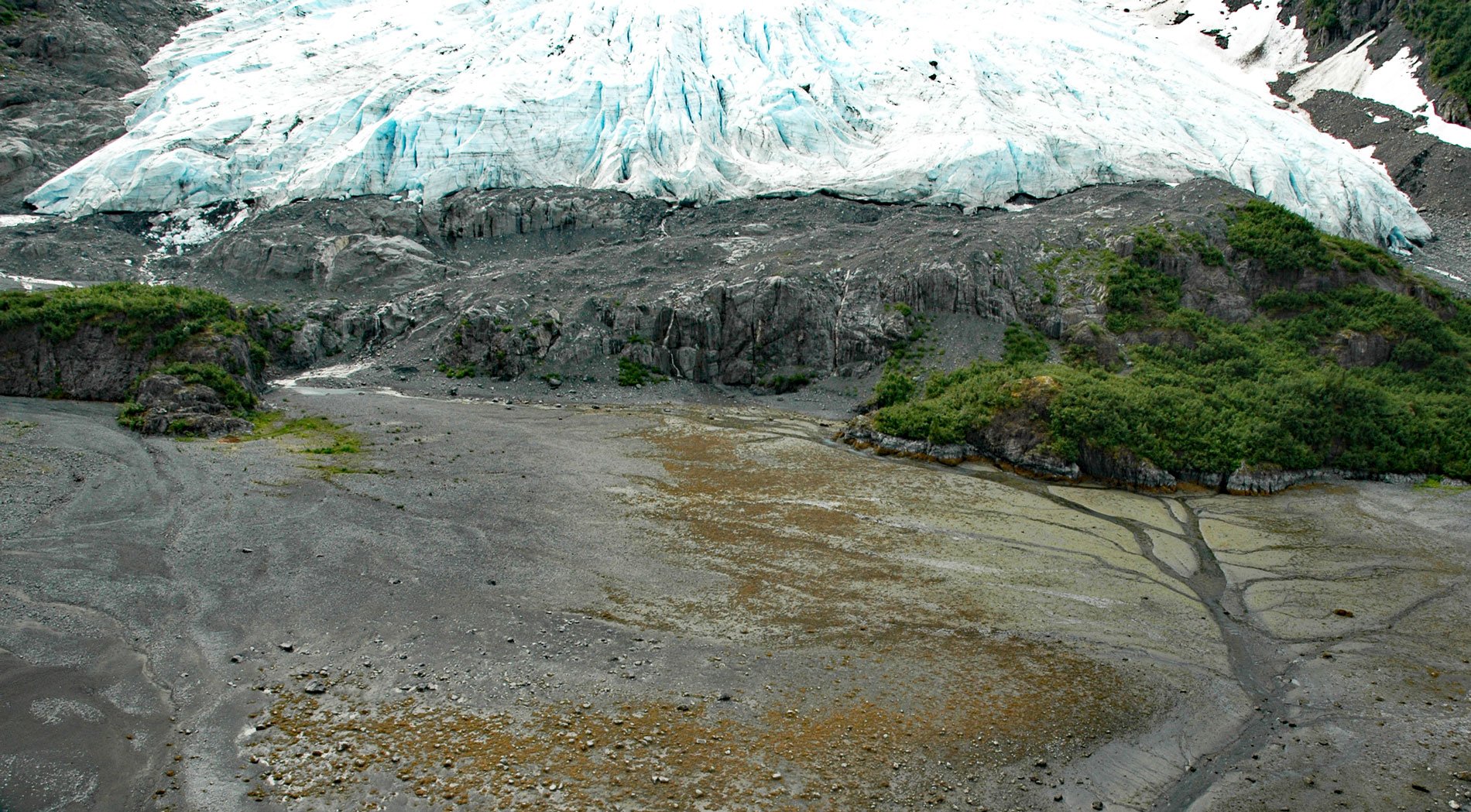Lawrence Glacier starts from several cirques situated at the northern extent of the Kenai Mountains at an elevation of roughly 3,000 feet (915 m) and flows generally northwest for 2.4 miles (4 km) to within a few hundred feet of tidewater at the south end of Willard Island in Blackstone Bay, about 84 miles (135 km) west-southwest of Valdez and 7 miles (11 km) south-southeast of Whittier, Alaska. Lawrence Glacier was named in 1910 by Lawrence Martin of the University of Wisconsin for Lawrence College in Appleton, Wisconsin. Lawrence Glacier retreated more than 330 feet (100 m) and thinned as much as 130 feet (40 m) between 1978 and 2000. The ice retreat has exposed bedrock representing the Valdez Group that dominates the northwestern part of Prince William Sound and is part of the Southern Margin Composite terrane that developed during the Late Cretaceous and consists of highly deformed metasedimentary greywacke, siltstone, and shale generally considered to be deposits of turbidity currents in an oceanic trench.
Captain George Vancouver‘s expedition mapped the northwestern region of Prince William Sound in 1794 when Blackstone Glacier had already retreated south from a terminal moraine near the north end of Willard Island. In 1849, Captain Mikhail D. Tebenkov made a map of northwestern Prince William Sound that indicated an ice front terminating at tidewater near the mouth of Blackstone Bay. This glacier was later named after Tebenkov, and it has since retreated more than 2 miles (1.6 km) and is now fronted by several large ice marginal lakes and a large glacial outwash plain. In 1907, this area became part of the newly established Chugach National Forest, one of the largest in the national forest system. In 1909, Ulysses S. Grant and Daniel F. Higgins of the U.S. Geological Survey were the first to map the glaciers of Blackstone Bay, and in 1910 Lawrence Martin named many of them for schools in Wisconsin, including Lawrence, Northland, Ripon, Marquette, and Beloit.
The glaciers of Blackstone Bay are part of the northernmost icefield in the Kenai Mountains, which is situated between the Sargent Icefield to the south and Prince William Sound to the north, and has no official name. It extends from elevations near 5,000 feet (1,525 m) to sea level with a variety of glacier types, and is marked by contrasting climate from its eastern to western margins. The highest peaks in the area rise to 6,500 feet (1,980 m). The firn limit ranges from 1,500 to 3,280 feet (450-1,000 m), with the higher elevations represented on the southern and western slopes which face the prevailing storm systems. The northern section of this glacier complex covers 77,100 acres (31,200 ha) and is the source for an array of glaciers such as those surrounding Blackstone Bay, and Portage Glacier that drains northward and terminates at Portage Lake, and Whittier Glacier that terminated above the town of Whittier. The western side of the ice field terminates on the landward side of the Kenai Peninsula with several valley glaciers such as Trail, Bartlett, Skookum, and Spencer glaciers. Read more here and here. Explore more of Lawrence Glacier and Blackstone Bay here:

